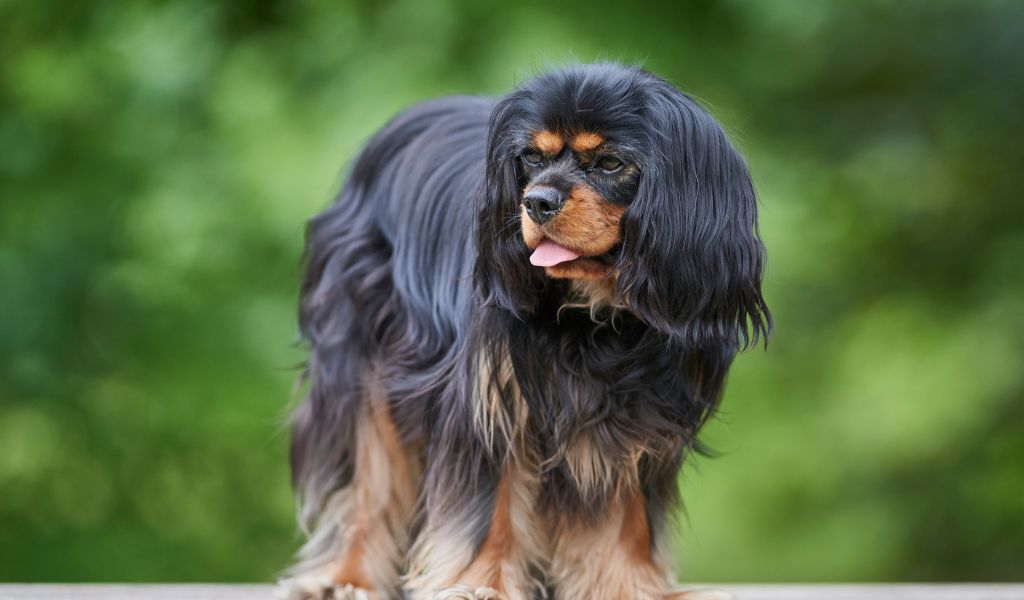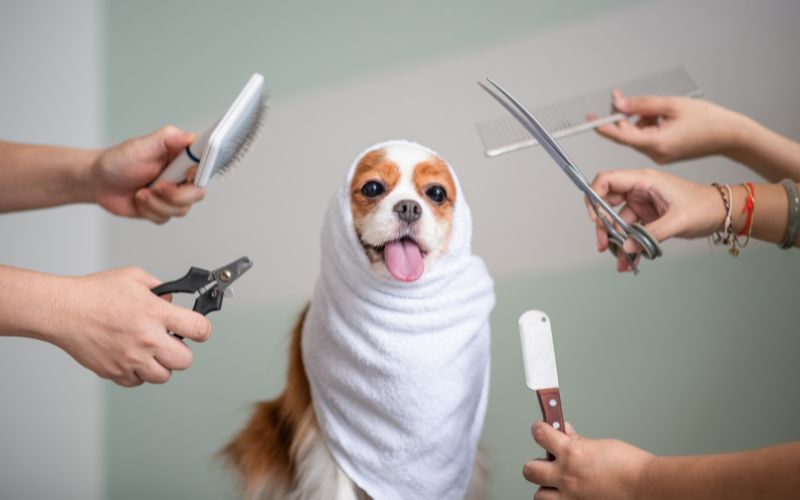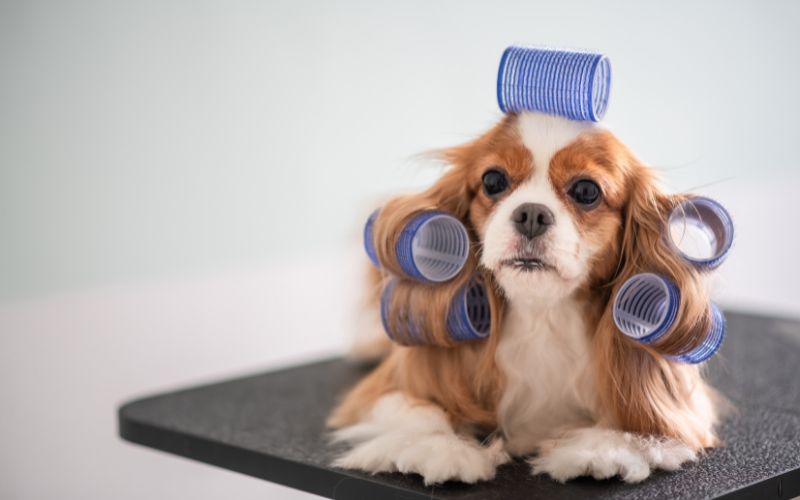Cavalier King Charles Spaniels are bred to have a luxurious coat of hair, but when do they actually get their full coat?
And what can you do to help make sure their fur grows in healthy and strong?
Depending on the individual dog and its genes, Cavalier King Charles spaniels may start to grow their full coat of hair at different points in time. Some dogs may start getting their full coat of hair at only four months old, while others may not see their final coat until they are well into adulthood.
When do Cavalier King Charles spaniels get their full coat?
A Cavalier’s coat will normally be fully grown by 12 months of age but, in some cases it can take up to two years to fully develop.
The breed standard for the Cavalier King Charles spaniel states that the coat should be ” silky, moderately long, with numerous featherings on ears, legs and tail.
Puppies are born with a short, downy coat that gradually grows in length and density.
During the first year of life, most Cavalier King Charles spaniels will develop their adult coat.
However, some may continue to fill in until they are two years old.
While most Cavaliers have a single coat, some may have a double coat, which is more feathery and may take longer to mature.
Regardless of the type of coat, regular grooming is necessary to maintain its health and beauty.

What are the signs that a Cavalier King Charles spaniel is ready for a trim?
If you’re thinking about giving your Cavalier a full trim, there are a few things you’ll want to keep in mind.
First of all, it’s important to make sure that your dog is at least six months old.
Puppies’ coats are still developing, and clipping too early can cause permanent damage.
In addition, you’ll want to check for signs that your dog’s coat is ready for a full clip. The coat should be dense and free of tangles, and the hair should be at least two inches long.
Finally, you’ll need to have the right tools on hand.
A good pair of scissors and a clipper will help you get the job done quickly and easily.

How can you help your Cavalier King Charles get through moulting?
As any pet owner knows, moulting is a natural part of life for most animals.
While it can be frustrating to constantly find hair on your clothing and furniture, shed hair is actually a sign of a healthy animal.
For Cavaliers, shedding usually occurs once or twice a year and is known as moulting and their moult can last anywhere from two to six weeks.
During this time, they may lose their appetite and seem lethargic.
As a result, it’s important to take extra care of your Cavalier during their moult.
Here are a few tips:
Brush them regularly. This will help to remove loose hair and encourage new growth.
Feed them a healthy diet. A balanced diet will help to keep their skin and coat healthy.
Give them plenty of exercise. Exercise will help to reduce stress levels and promote a healthy coat.
Take them to the vet if you notice any unusual bald spots or excessive shedding. Moulting is a normal process, but there could be an underlying medical condition causing the problem.
What are some of the best products to use during a moult?
In addition to the usual hair loss, dogs who are molting may also experience dry skin, itchiness, and even bald spots
Luckily, there are a number of products on the market that can help to ease your dogs discomfort and speed up the moulting process.
For starters, consider using a de-shedding shampoo, which can help to loosen and remove excess hair.
You may also want to try a conditioner or detangler, which can make brushing easier and less painful for your dog.
Finally, if your dog is having trouble with dry skin, you can try using a moisturizing cream or lotion.
How can you tell if your dog is shedding too much?
While it is normal for Cavaliers to shed some hair, heavy shedding can be a sign of an underlying health condition.
If you notice that your dog is losing more hair than usual, it is important to consult with a vet.
Several medical conditions can cause excessive shedding, including allergies, hormonal imbalances, and infections.
In some cases, changes in diet or supplements may help to reduce shedding.
However, only a vet can properly diagnose the cause of excessive shedding and recommend the best course of treatment.
Final Words
Cavaliers have normally grown a full coat by the time they are 12 months old, although in some cases this can be longer.
Keep your Cavalier’s coat in good condition by regular brushing.
When your Cavalier moults there are lots of products on the market that can help to ease your dogs discomfort and speed up the moulting process.
If you notice that your dog is losing more hair than usual, it is important to consult with a vet as this could be a sign of an underlying health condition.





